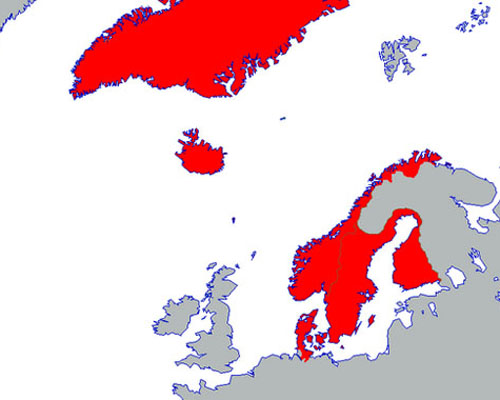| Introduktion

| | I 1400-tallet var Norden forenet under et fælles kongedømme i Kalmarunionen. Modstridende interesser i en sådan central styring gav dog anledning til stridigheder, og i 1523 brød unionen definitivt sammen.
Men for købstæderne i Øresundsregionen var det en fremgangsperiode, og inden for kirke, kloster og adel, fandt der fandt omfattende byggerier sted. |
Perioden er præget af fornyet ekspansion, øget vækst i handelen og bysamfundene og en stadig mere aktiv medvirken fra kongemagtens side. Konge og adel regerede i samråd og i Øresundsregionen blev kongemagten initiativtager til byudvikling og forsøg på frigørelse fra den massive nordtyske påvirkning.
Norden var forenet i en personalunion, Kalmarunionen, men kongens hansafjendtlige politik skabte uro i Mellemsverige, der førte til det såkaldte Engelbrechtoprør, som nåede helt ned til grænsen mod Skåne.
I anden halvdel af århundredet blev åndslivet påvirket af reformkatolske og humanistiske strømninger. Den kulturelle påvirkning orienterede sig nu også imod de nederlandske områder, hvor renæssancens menneske- og virkelighedsopfattelse begyndte at gøre sig gældende.
Det er også i 1400-tallet at munkeordenen karmeliterne, med kongens hjælp, vandt indpas i landet. I Øresundsregionen ser man det i Landskrona og Helsingør, hvor det imponerende klosterbyggeri, Vor Frues Kloster, i Helsingør endnu kan beskues.
Adelens borgbyggeri udviklede sig efterhånden fra middelalderens forsvarsfunktion til slotslignende pragtboliger for disse magtens mænd.
I forbindelse med byudviklingen dukker en voksende selvfølelse op hos håndværkerlaugene, der kræver lovbestemte privilegier. |